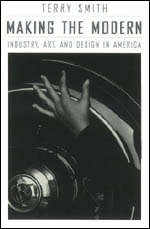
Suburban Nation: The Rise of Sprawl and the Decline of the American Dream (2000)
By Andres Duany, Elizabeth Plater-Zyberk, and Jeff Speck
Synopsis: This book is basically the mission statement for New Urbanism, and is "a primer on how design can help us untangle the mess we have made and once again build and inhabit places worth caring about" (xiv). It's also a "study of two different models of urban growth: the traditional neighborhood and suburban sprawl" (3). This book is a plan for how to create good human environments, and provides an overview of the various problems of sprawl - how they were created by federal funding, how they are maintained, what sprawl looks like, and why it is bad. All of this is intermixed with elements of traditional neighborhood development in order to show a solution to the problem. The tone is definitely defensive, yet they do a good job of defending New Urbanism against critics who mock the "traditional" design. The authors basically say hey, that's what people want, and we have bigger concerns to be thinking about. Authors state that sprawl consists of 1) housing subdivisions, 2) shopping centers, 3) office parks, 4) civic institutions, 5) roadways. The problem is that sprawl separates and isolates all our vital functions, thus this book is an attempt to bring back a sense of holism. We have become fragmented and can combat this via design. The authors propose six rules of Traditional Neighborhood Design (TND): 1) 5-minute walk from edge to cente, 2) a center, 3) good street networks, 4) narrow, versatile streets, 5) mixed-use, 6) special sites for special buildings. The problem is that traditional suburbia lacks choice. We shouldn't let mistaken impulses/design of Modernist architectural solutions prevent us today from designing places to better help society. They say: "experiment on the rich, who can always move out" (53).
Interacts With:
Building Suburbia, Edge City (and Garreau claims edge cities are a way of re-integrating functions, but I'm not totally convinced), The Modern Urban Landscape
Hmm, this could be seen as yet another antidote to the fragmentation/alienation of modernity, as authors claim New Urbanism will bring a sense of re-unification and holism.





